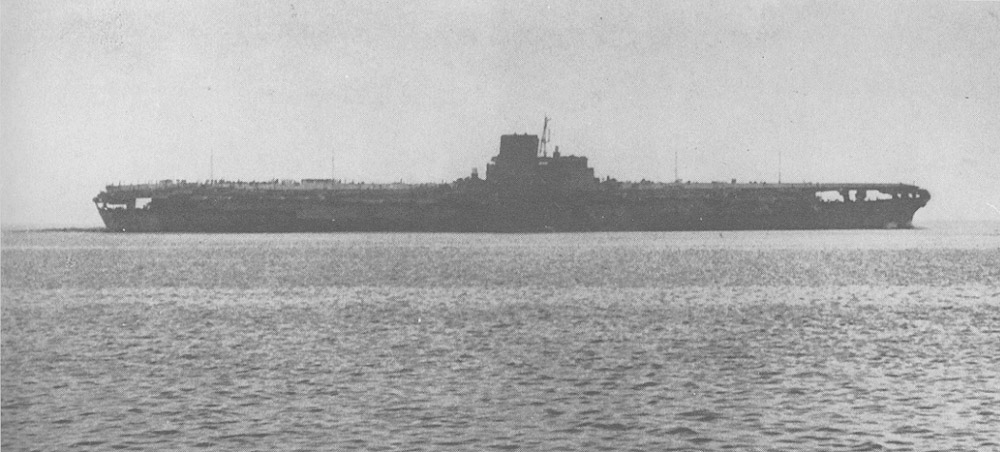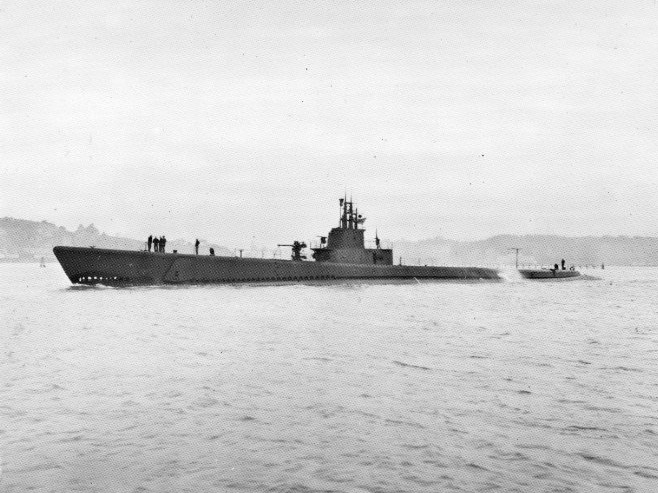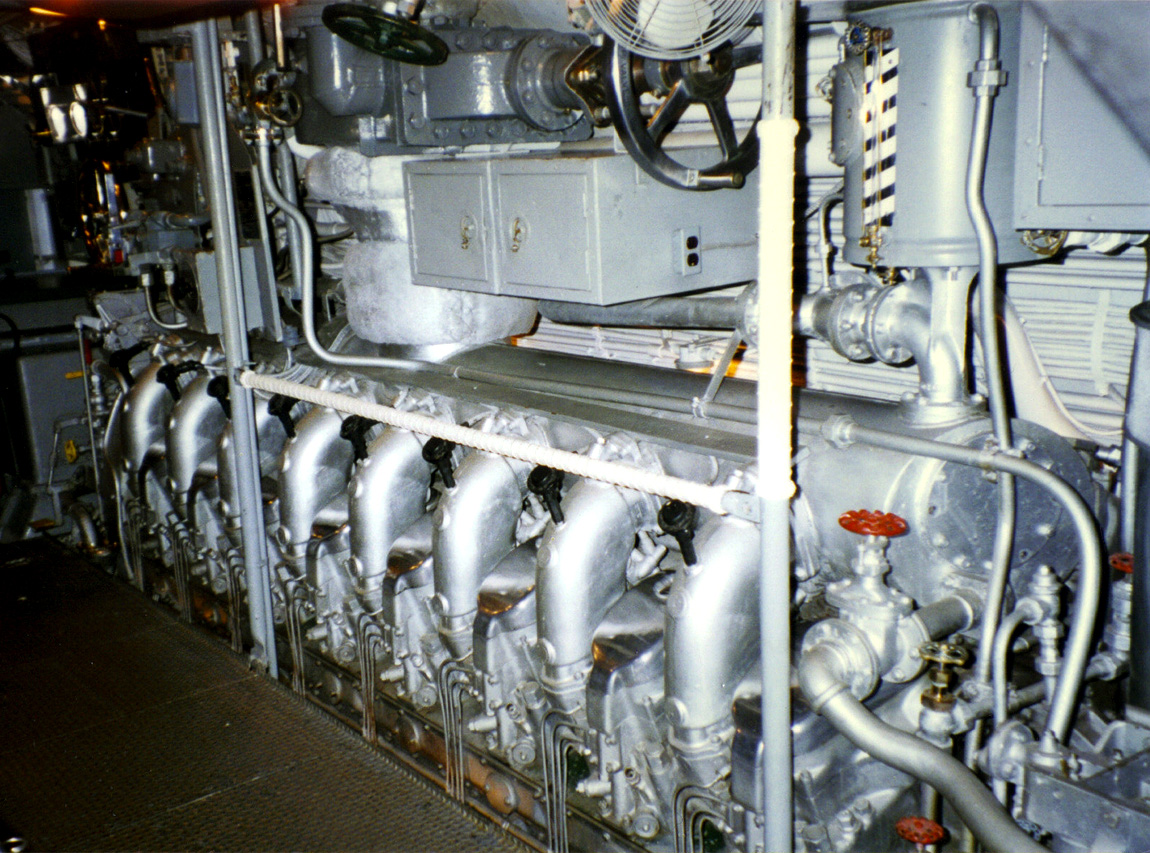|
Atlantic Reserve Fleet, New London
Atlantic Reserve Fleet, New London opened in 1946 at the Naval Submarine Base New London in Groton, Connecticut on the Thames River. The New London Reserve Fleet was 3 miles north of the city New London, Connecticut. Naval Submarine Base New London opened in 1872 as a Navy yard, gained its first submarines on 13 Oct 1915, and earned the designation of Submarine Base in about 1916. The freshwater port became a good site to store both submarines and ships after World War II as part of the United States Navy reserve fleets. Three submarine tender ships were given the task of mothballing the submarines. The three ships: USS Apollo, USS Anthedon, USS Proteus (AS-19) cleaned the ship and sealed the subs with preservatives. It took a few years to process the over 50 submarines in the New London Reserve fleet. Some submarines there were reactivated for the Korean War. By 1965 the fleet of World War II submarine were obsolete and the fleet had been scrapped. The USS Apollo worked at ... [...More Info...] [...Related Items...] OR: [Wikipedia] [Google] [Baidu] |
Groton, Connecticut
Groton is a town in New London County, Connecticut located on the Thames River. It is the home of General Dynamics Electric Boat, which is the major contractor for submarine work for the United States Navy. The Naval Submarine Base New London is located in Groton, and the pharmaceutical company Pfizer is also a major employer. Avery Point in Groton is home to a regional campus of the University of Connecticut. The population was 38,411 at the 2020 census. History Groton was established in 1705 when it separated from New London, Connecticut. The town was named after Groton, Suffolk in England. A hundred years before it was established, the Niantic people settled in the area between the Thames River and Pawcatuck River, but they eventually settled in Westerly, Rhode Island. The newcomers to the land were the Pequots, a branch of the Mohawk people who moved eastward into the Connecticut River Valley. The summer of 1614 was the first time that the Pequots encountered white settl ... [...More Info...] [...Related Items...] OR: [Wikipedia] [Google] [Baidu] |
Reserve Fleet
A reserve fleet is a collection of naval vessels of all types that are fully equipped for service but are not currently needed; they are partially or fully decommissioned. A reserve fleet is informally said to be "in mothballs" or "mothballed"; an equivalent expression in unofficial modern US naval usage is "ghost fleet". In earlier times, especially in British usage, the ships were said to be "laid up in ordinary". Overview Such ships are held in reserve against a time when it may be necessary to call them back into service. They are usually tied up in backwater areas near naval bases or shipyards in order to speed the reactivation process. They may be modified for storage during such a period, for instance by having rust-prone areas sealed off or wrapped in plastic or, in the case of sailing warships, the masts removed. While being held in the reserve fleet, ships typically have a minimal crew (known informally as a skeleton crew) to ensure that they stay in somewhat usable co ... [...More Info...] [...Related Items...] OR: [Wikipedia] [Google] [Baidu] |
Submarine Force Library And Museum
The United States Navy Submarine Force Library and Museum is located on the Thames River in Groton, Connecticut. It is the only submarine museum managed exclusively by the Naval History & Heritage Command division of the Navy, and this makes it a repository for many special submarine items of national significance, including . Visitors may take a 30-minute self-guided audio tour of the ''Nautilus''. History The Electric Boat Company (EB) established the museum in 1955 as the ''Submarine Library''. EB donated it to the Navy in 1964, and the Navy moved it to its current location next to Naval Submarine Base New London. It received its official title in 1969. The "Connecticut Nautilus Committee" was formed in 1984 to raise funds for an improved museum, hoping to convince the Navy to donate the ''Nautilus''. A new facility was built with funding from the state, individuals, and businesses, opening in 1986. In late 1997, the Committee started planning and raising funds for a addition ... [...More Info...] [...Related Items...] OR: [Wikipedia] [Google] [Baidu] |
USS Archerfish (SS-311)
USS ''Archerfish'' (SS/AGSS-311) was a ''Balao''-class submarine. She was the first ship of the United States Navy to be named for the archerfish. ''Archerfish'' is best known for sinking the Japanese aircraft carrier ''Shinano'' in November 1944, the largest warship ever sunk by a submarine. For this achievement, she received a Presidential Unit Citation after World War II. Construction and commissioning ''Archerfish''s keel was laid down on 22 January 1943 in the Portsmouth Navy Yard in Kittery, Maine. She was launched on 28 May 1943, sponsored by Miss Malvina Thompson, the personal secretary to first lady Eleanor Roosevelt. The boat was commissioned on 4 September 1943. World War II ''Archerfish'' underwent shakedown training through the first part of November off the New England coast, and headed for Hawaii via the Panama Canal. She arrived at Pearl Harbor on 29 November 1943 and joined the Pacific Fleet. First four patrols, December 1943 – September 1944 Aft ... [...More Info...] [...Related Items...] OR: [Wikipedia] [Google] [Baidu] |
Greece
Greece,, or , romanized: ', officially the Hellenic Republic, is a country in Southeast Europe. It is situated on the southern tip of the Balkans, and is located at the crossroads of Europe, Asia, and Africa. Greece shares land borders with Albania to the northwest, North Macedonia and Bulgaria to the north, and Turkey to the northeast. The Aegean Sea lies to the east of the Geography of Greece, mainland, the Ionian Sea to the west, and the Sea of Crete and the Mediterranean Sea to the south. Greece has the longest coastline on the Mediterranean Basin, featuring List of islands of Greece, thousands of islands. The country consists of nine Geographic regions of Greece, traditional geographic regions, and has a population of approximately 10.4 million. Athens is the nation's capital and List of cities and towns in Greece, largest city, followed by Thessaloniki and Patras. Greece is considered the cradle of Western culture, Western civilization, being the birthplace of Athenian ... [...More Info...] [...Related Items...] OR: [Wikipedia] [Google] [Baidu] |
USS Jack (SS-259)
USS ''Jack'' (SS-259), a submarine, was the first ship of the United States Navy to be named for the jack (any of various fishes—young pike, green pike or pickerel, or large California rockfish). Construction and commissioning ''Jack''′s keel was laid down by the Electric Boat Company at Groton, Connecticut, on 2 February 1942. She was launched on 16 October 1942, sponsored by Mrs. Frances Seely, and commissioned at Naval Submarine Base New London in New London, Connecticut, on 6 January 1943, Commander Thomas. M. "Tommy" Dykers in command. Service history First and second war patrols, June – October 1943 ''Jack'' underwent shakedown training along the New England coast, sailing from New London 26 April 1943 for service in the Pacific. Reaching Pearl Harbor 21 May, the submarine took on supplies and departed on her first offensive war patrol 5 June 1943. Taking part in the submarine offensive against Japan, she patrolled off Honshū. ''Jack'' came upon a five-ship ... [...More Info...] [...Related Items...] OR: [Wikipedia] [Google] [Baidu] |
USS Tigrone (SS-419)
USS ''Tigrone'' (SS/SSR/AGSS-419), a ''Tench''-class submarine, was the only ship of the United States Navy to be named for the tigrone, a tiger shark found in tropical waters. Her keel was laid down on 8 May 1944 by the Portsmouth Navy Yard. She was launched on 20 July 1944 sponsored by Mrs. Mary B. Grisham (née Breault), wife of Captain Charles F. Grisham, USN, Superintendent of the Portsmouth, N.H., Navy Yard, and commissioned on 25 October 1944. ''Tigrone'' completed fitting out in mid-November and conducted training out of Portsmouth, New Hampshire, and New London, Connecticut, before departing the Submarine Base at New London on the last day of 1944. After ten days of training at the Fleet Sound School, the new submarine got underway on 16 January. Steaming via the Canal Zone, she paused for a week of training off Panama, then set her course for Hawaii, conducting extensive practice approach exercises with attack transport en route. On 16 February, she arrived at Pe ... [...More Info...] [...Related Items...] OR: [Wikipedia] [Google] [Baidu] |
Radar Picket
A radar picket is a radar-equipped station, ship, submarine, aircraft, or vehicle used to increase the radar detection range around a nation or military (including naval) force to protect it from surprise attack, typically air attack, or from criminal activities such as smuggling. By definition a radar picket must be some distance removed from the anticipated targets to be capable of providing ''early warning''. Often several detached radar units would be placed to encircle a target to provide increased cover in all directions; another approach is to position units to form a ''barrier line''. Radar picket units may also be equipped to direct friendly aircraft to intercept any possible enemy. In British terminology the radar picket function is called aircraft direction. Airborne radar pickets are generally referred to as airborne early warning (AEW). In a sense radars intended to track ballistic missiles can be thought of as radar pickets, but because such systems are also used ... [...More Info...] [...Related Items...] OR: [Wikipedia] [Google] [Baidu] |
Gato Class Submarine
The ''Gato'' class of submarines was built for the United States Navy and launched in 1941–1943; they were the first mass-production U.S. submarine class of World War II. Together with their near-sisters the and es, their design formed the majority of the United States Navy's World War II submarine fleet.Typical Gato-class submarine diagram USS ''MacKinnon'' website Named after the of the class, , the ''Gato''s and their successors formed the core of the submarine service that was largely responsible for the destruction of the Japanese merchant marine and a large portion of the Imperial Japanese Navy in |
USS Pompon
USS ''Pompon'' (SS/SSR-267), a ''Gato''-class submarine A submarine (or sub) is a watercraft capable of independent operation underwater. It differs from a submersible, which has more limited underwater capability. The term is also sometimes used historically or colloquially to refer to remotely op ..., was a ship of the United States Navy named for the pompon (fish), pompon, an American fish of the ''Anisot'' family. Construction and commissioning ''Pompon'' was Keel-laying, laid down by the Manitowoc Shipbuilding Company at Manitowoc, Wisconsin, Manitowoc, Wisconsin, on 26 November 1941; Ceremonial ship launching, launched 15 August 1942, sponsored by Miss Katherine Mary Wolleson; and Ship commissioning, commissioned 17 March 1943. Service history On 5 April 1943 ''Pompon'' began her voyage down the Mississippi River to New Orleans, Louisiana, New Orleans in a floating drydock. Stores were loaded at New Orleans and she sailed for the Pacific Ocean, Pacific. First wa ... [...More Info...] [...Related Items...] OR: [Wikipedia] [Google] [Baidu] |
UGM-27 Polaris
The UGM-27 Polaris missile was a two-stage solid-fueled nuclear-armed submarine-launched ballistic missile (SLBM). As the United States Navy's first SLBM, it served from 1961 to 1980. In the mid-1950s the Navy was involved in the Jupiter missile project with the U.S. Army, and had influenced the design by making it squat so it would fit in submarines. However, they had concerns about the use of liquid fuel rockets on board ships, and some consideration was given to a solid fuel version, Jupiter S. In 1956, during an anti-submarine study known as Project Nobska, Edward Teller suggested that very small hydrogen bomb warheads were possible. A crash program to develop a missile suitable for carrying such warheads began as Polaris, launching its first shot less than four years later, in February 1960. As the Polaris missile was fired underwater from a moving platform, it was essentially invulnerable to counterattack. This led the Navy to suggest, starting around 1959, that they be g ... [...More Info...] [...Related Items...] OR: [Wikipedia] [Google] [Baidu] |
Charleston Naval Shipyard
Charleston Naval Shipyard (formerly known as the Charleston Navy Yard) was a U.S. Navy ship building and repair facility located along the west bank of the Cooper River, in North Charleston, South Carolina and part of Naval Base Charleston. History It began operations in 1901 as a drydock, and continued as a navy facility until 1996 when it ceased operations as the result of recommendations of the 1993 Base Realignment and Closure Commission. At that time it was leased to ''Detyens Shipyards, Inc.'' Originally designated as the Navy Yard and later as the Naval Base it had a large impact upon the local community, the tri-county area and the entire State of South Carolina. The yard first produced the destroyer , then began to increase production in the 1930s. A total of 21 destroyers were assembled at the naval facility. In 1931, Ellicott Dredges delivered the 20-inch cutter dredge ''Orion'' still in operation at the old Charleston Naval Shipyard. Two of the largest vessel ... [...More Info...] [...Related Items...] OR: [Wikipedia] [Google] [Baidu] |


_underway_c1947.jpg)




_(2).jpg)
_and_USS_Tillman_(DD-641)_at_the_Charleston_Navy_Yard_in_1941.jpg)